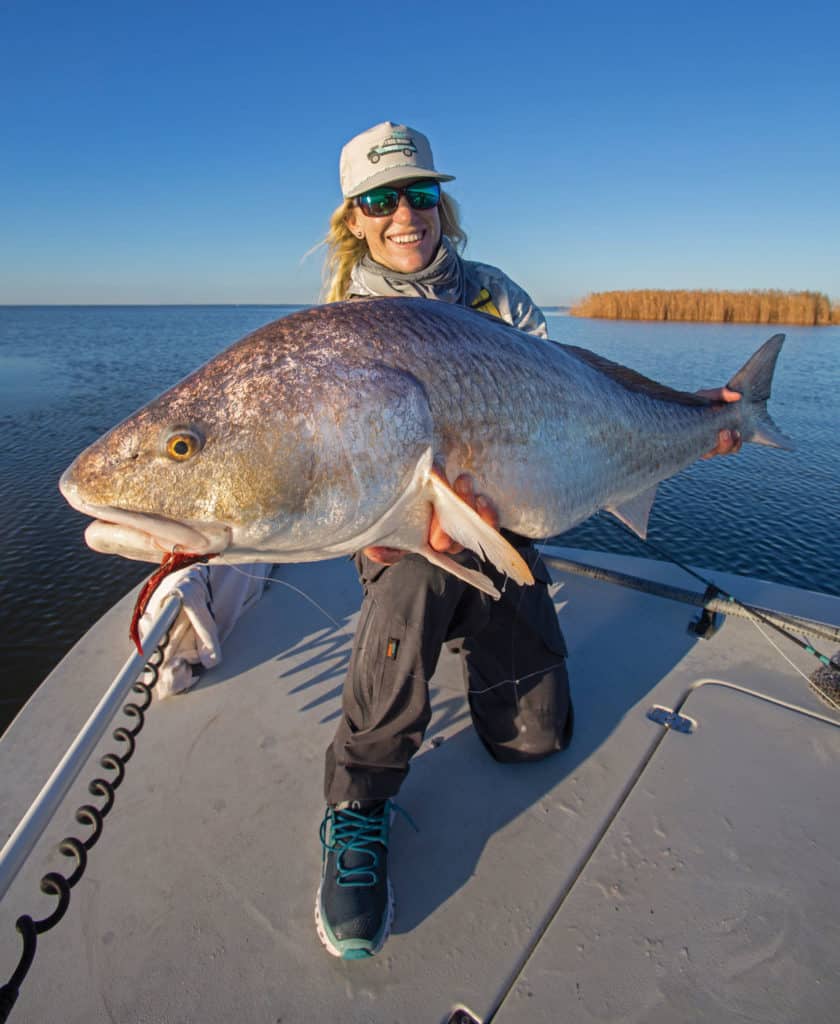
Catching redfish, my grandfather used to tell me, is an exercise in versatility. Chances are that when you tangle with a red, whether your first or your 100th, that fish will show you something you did not anticipate. The ability to adjust to the disparate situations starts with the tackle.
While most commonly caught in the 4- to 8-pound range, redfish vary from rats of 15 inches or less to bulls exceeding 60 inches in length and weighing over 90 pounds. It is tough for a single outfit to cover all situations, so the gear you use should depend on where you fish and the size of the fish you expect. Spinning, baitcasting and fly gear all have their time and place.
Spinning Tackle
When fishing bays, flats and estuaries, a 6- to 7-foot medium-action rod rated for 8- to 17-pound line and 3/8- to 1-ounce lures gives you the flexibility to cast an array of lures and baits. Fishing channels or deeper oyster reefs demand a 7-foot medium-heavy rod rated for 15- to 30-pound line and 3/4- to 3-ounce lures. For surf-casting, you will want a longer (9- to 11-foot) medium-heavy surf rod rated for 15- to 30-pound line and 1- to 4-ounce lures.
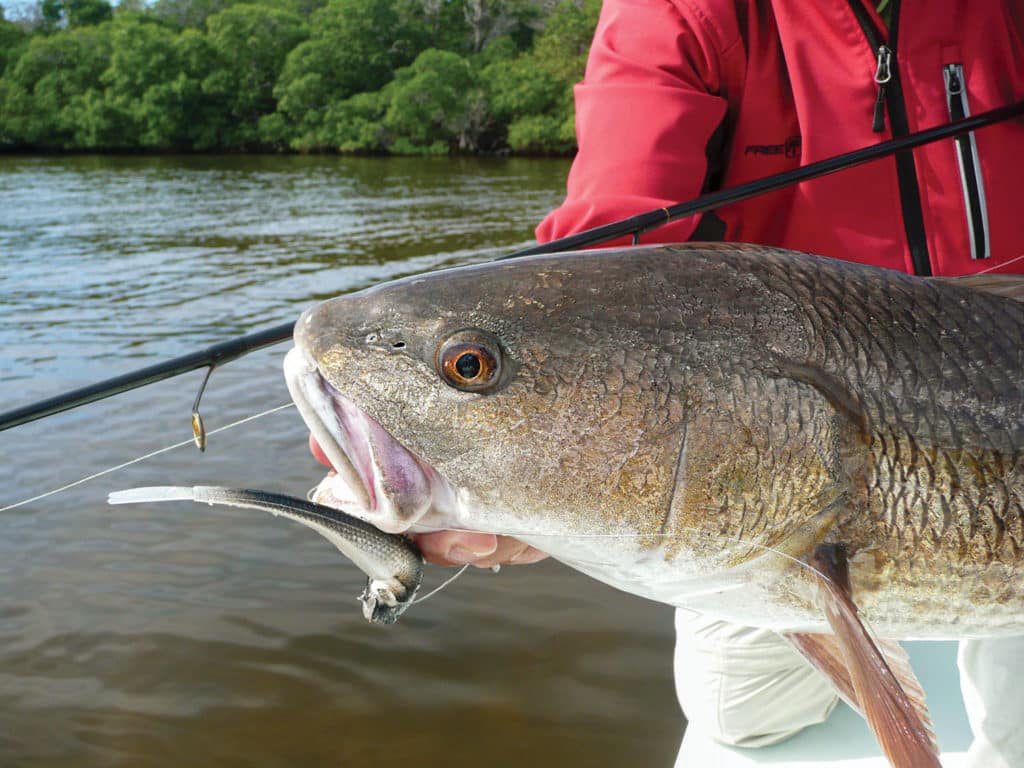
Pair spinning rods for the shallows with 2500- to 4000-series reels; for fishing nearshore in deeper water, step up to 4000- to 5500-series models. For the surf, opt for 5000- to 6500-series reels, which provide the additional line capacity for beachbound anglers. Choosing between monofilament and braid for your spinning tackle can be important. Braid maximizes sensitivity and scarcely stretches, so hook-sets are faster and more solid than with mono. But this lack of stretch also exaggerates the action of topwater lures that may need the elasticity of mono to work properly. Braid’s sensitivity can also make it difficult to distinguish between the natural movement of a live bait and the strike of a redfish, which can be subtle at times.
Baitcasting Gear
Redfish anglers often use baitcasting tackle, particularly when live-baiting. It improves casting accuracy and fish-fighting efficiency, but may present more of a challenge when casting into a breeze. A good baitcasting outfit for reds combines a 7-foot medium-light rod rated for 8- to 17-pound line with a 200-class, low-profile reel, preferably with 6.2 retrieve ratio or higher.
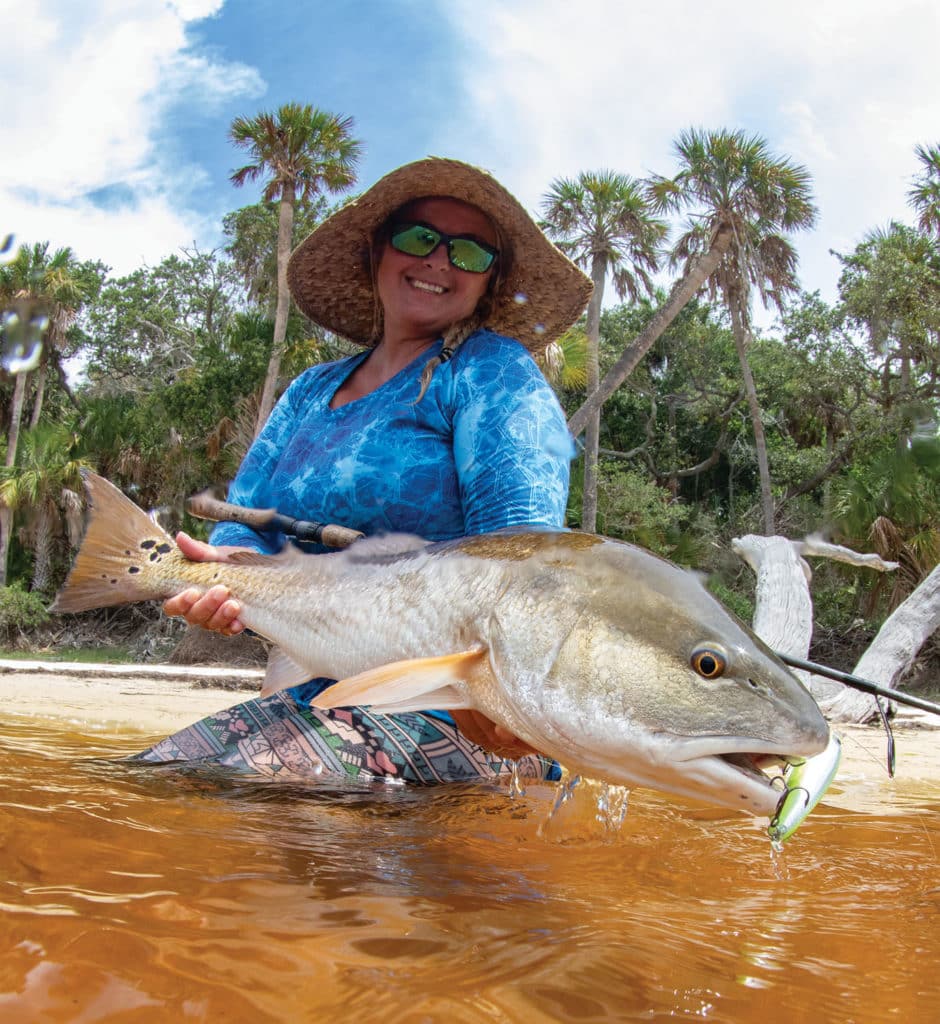
Going Conventional
Though less efficient for casting, conventional tackle is hard to beat when you anticipate a serious tussle with a big red, and the need to quickly stop and pull the fish away from a barnacle- or oyster-encrusted dock, pier, bridge or oil rig. Matching a medium-size levelwind reel rated for 20- to 40-pound line and a 7-foot medium-heavy action rod rated for 20- to 30-pound line will do nicely.
Fly-Fishing Options
Their visibility in clear, shallow water makes redfish excellent targets for fly-fishing.
Generally speaking, a 9-foot, 8-weight fly rod will cast most redfish fly patterns and win most fights with small- to medium-size fish. But fly-rod choices range from a 6- to a 10-weight, depending on the size of the target specimens, the heft of the flies you’ll throw, and whether or not you’ll be forced to turn the fish away from obstructions. Faster-action rods are preferred for delivering large or bulky flies, and aid in shortening the fight.
When sight-fishing, a floating fly line will cover most situations.
An intermediate line, however, can be helpful in water deeper than 4 feet. As for leaders, 9-footers with 10- to 16-pound-class tippet are ideal for the task; just add a short trace of 25- or 30-pound bite tippet to the business end.
Read Next: Bull Redfish on Fly
Redfish hit a variety of fly patterns, from topwater sliders and poppers, to baitfish and crustacean imitations. When fishing over grass, oysters or rocky bottom, flies with a mono weed guard are recommended. Weed guards prevent fouling and snagging, and keep you from having to constantly replace flies.
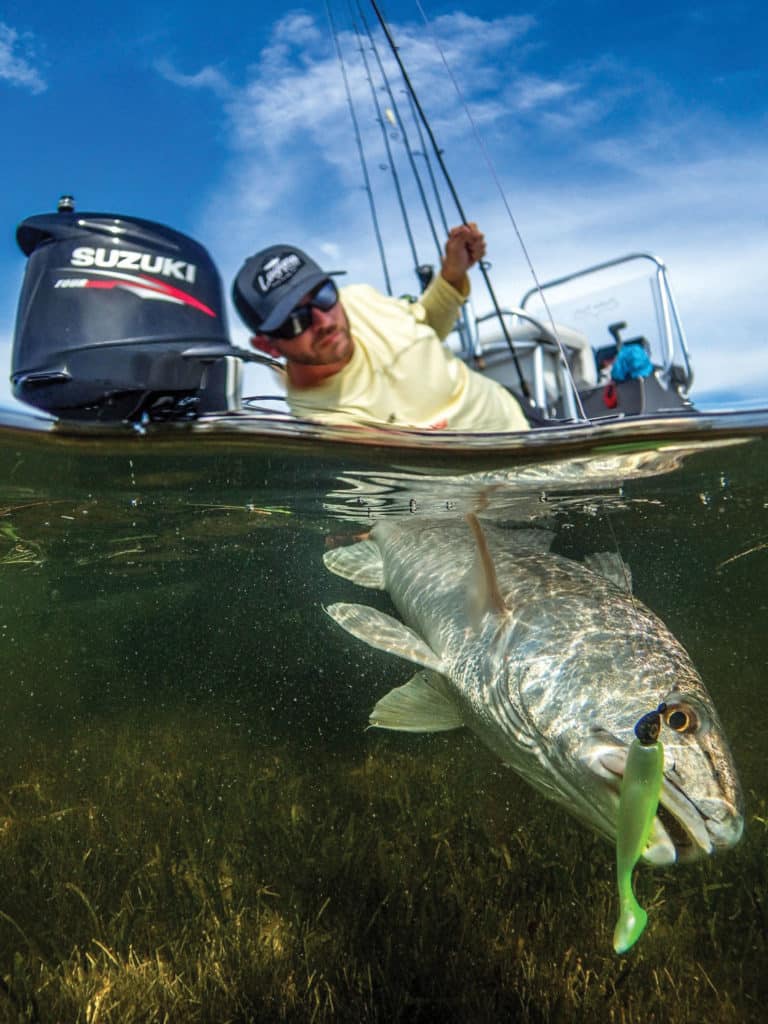
Artificial Impostors
A wide range of lures catch redfish at one time or another. Whether you fish a jig and soft-plastic tail, swimbait, spoon, spinnerbait, topwater plug or crankbait, matching the artificial to the available prey will greatly increase your success rate. This match-the-hatch approach means matching not only the size, color and shape, but also the action. Artificials should be fished to imitate what the redfish are feeding on, at the depth the redfish are feeding.
When fishing jig heads with soft-plastic bodies, adding a popping cork up the leader helps keep the lure suspended at just the right depth, plus the enticing noise and splash created by the cork draw the attention of the fish and prompt reaction strikes.
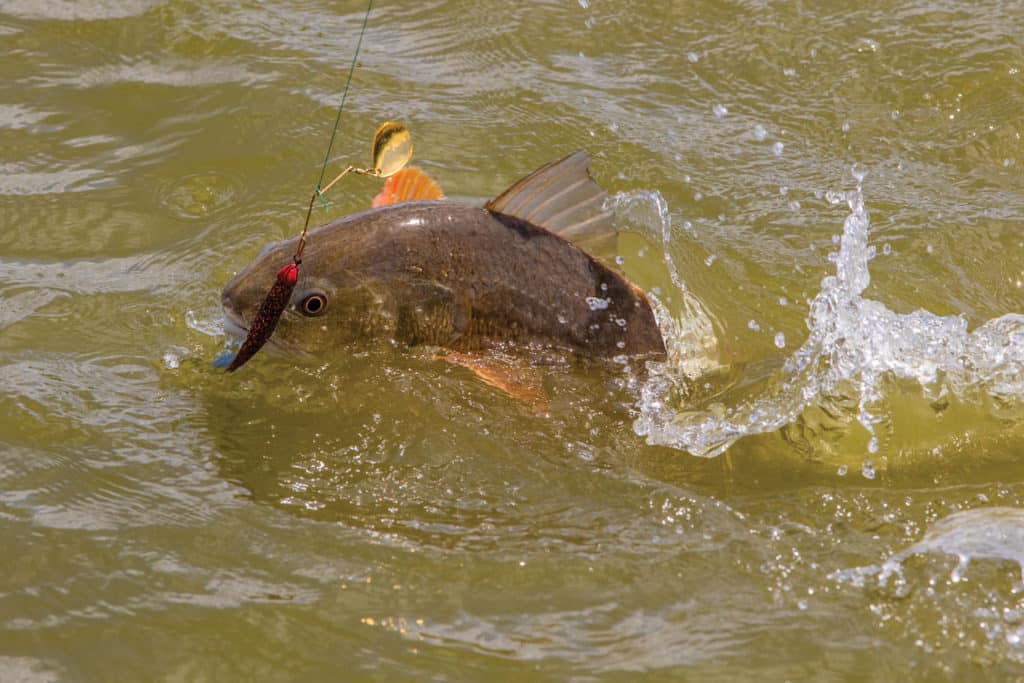
A silver or gold weedless spoon is an excellent search lure. Slithering through a grass bed, they seldom get ignored by redfish in the vicinity. Surface walkers and other topwater plugs are also great for locating redfish, which often explode on them instinctively, even when they’re focused on something else. But the effectiveness of topwater lures quickly dwindles as water deepens to more than 2 feet.
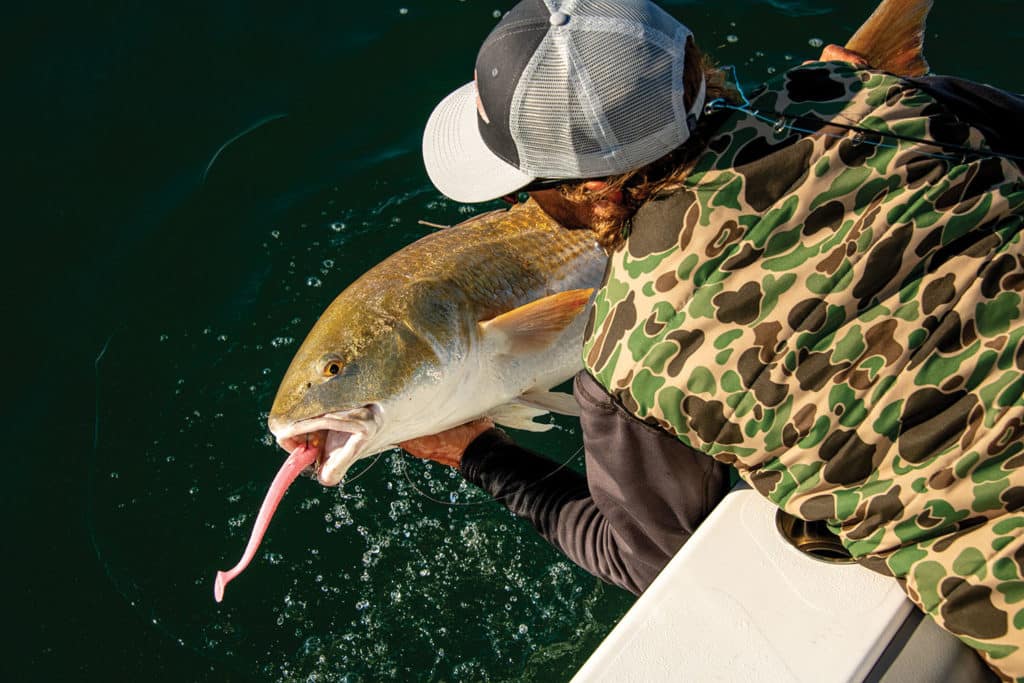
Follow the Leader
With artificials and bait, live or dead, it’s a good idea to use a mono or fluorocarbon leader between your terminal tackle and fishing line, especially if you use braid, which is easier for fish to detect. For light to medium spinning or baitcasting outfits, a 24- to 48-inch length of 20- to 30-pound leader will do just fine. However, whenever fishing big baits on heavy tackle and in gnarly surroundings, it’s best to step up to 4 to 6 feet of 40- or 50-pound.
Redfish Arsenal
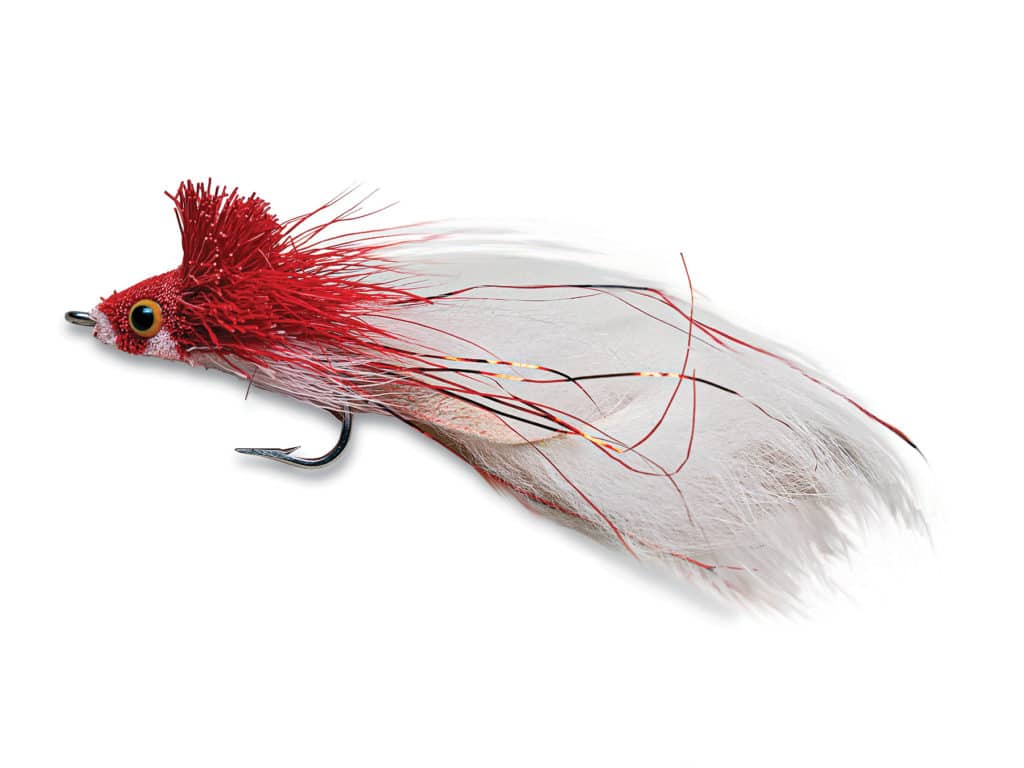
Designed to create surface commotion, dive a few inches, and float back to the surface, this fly draws violent reaction strikes.
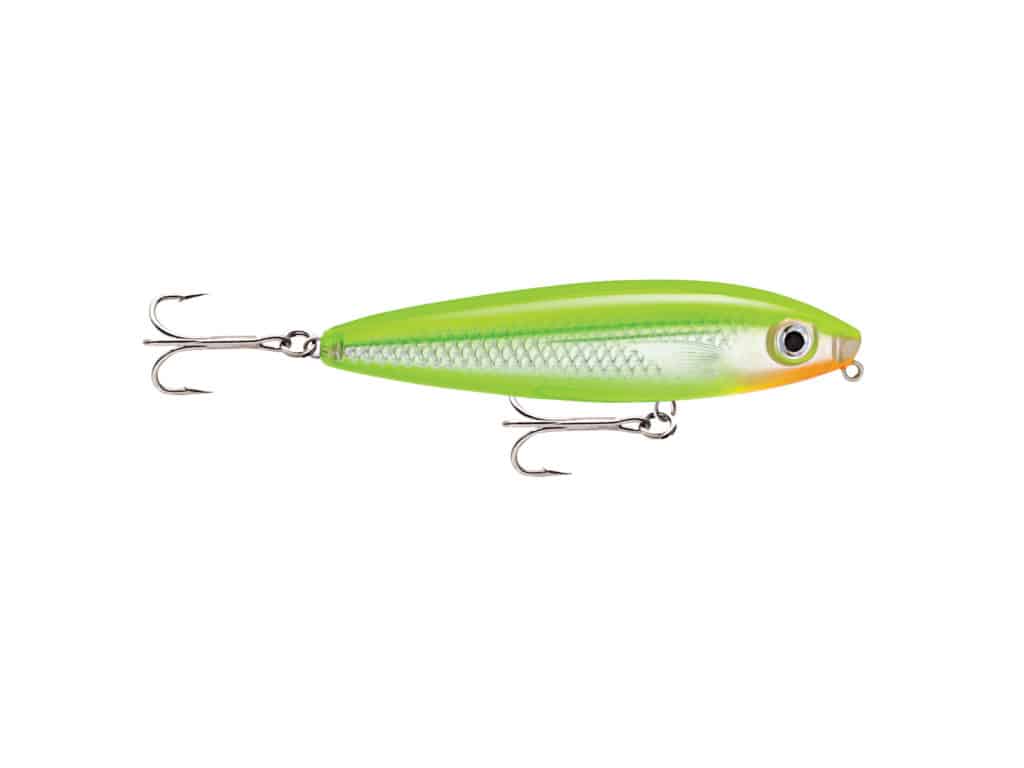
Redfish can’t resist this lively plug dancing on the surface in shallow water.
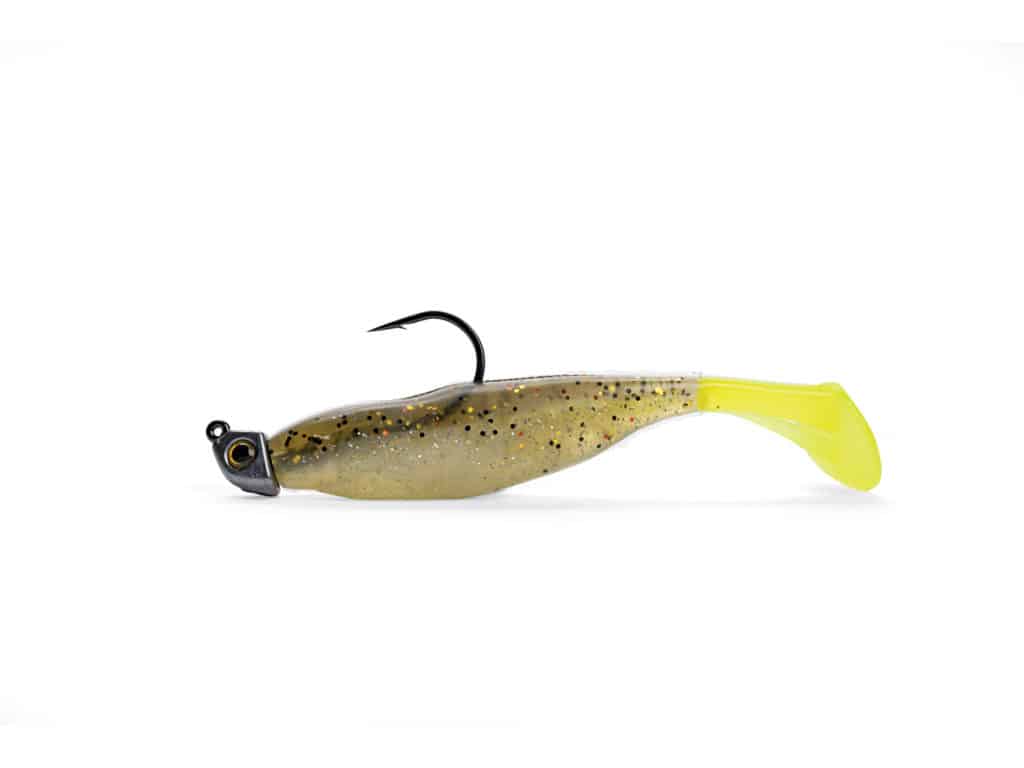
On a jig head, this paddle tail is a versatile redfish catcher.
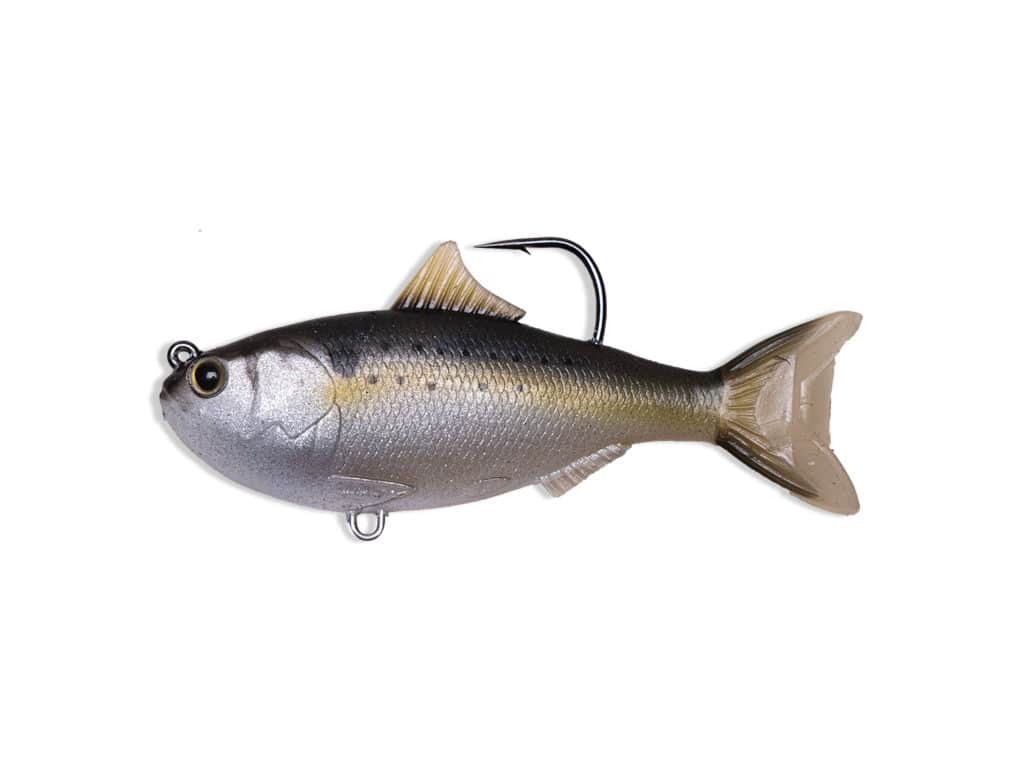
This realistic swimbait is a big asset, especially around schooling pogies.
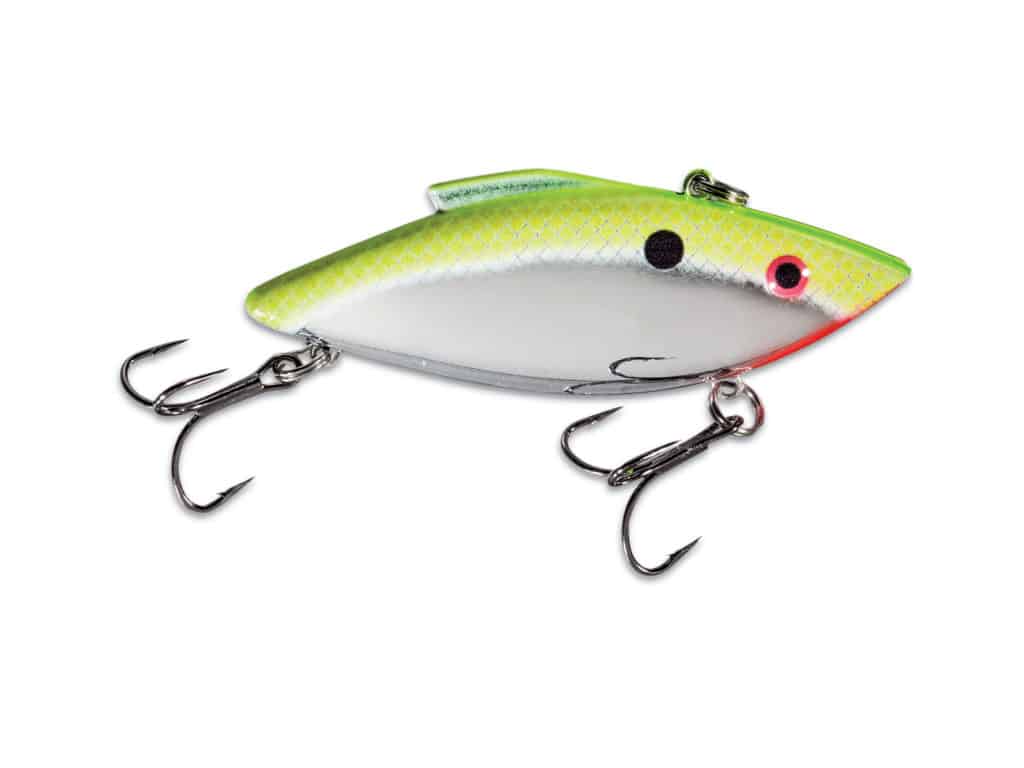
Retrieve this rattling crankbait slowly near structure or the bottom and hang on.
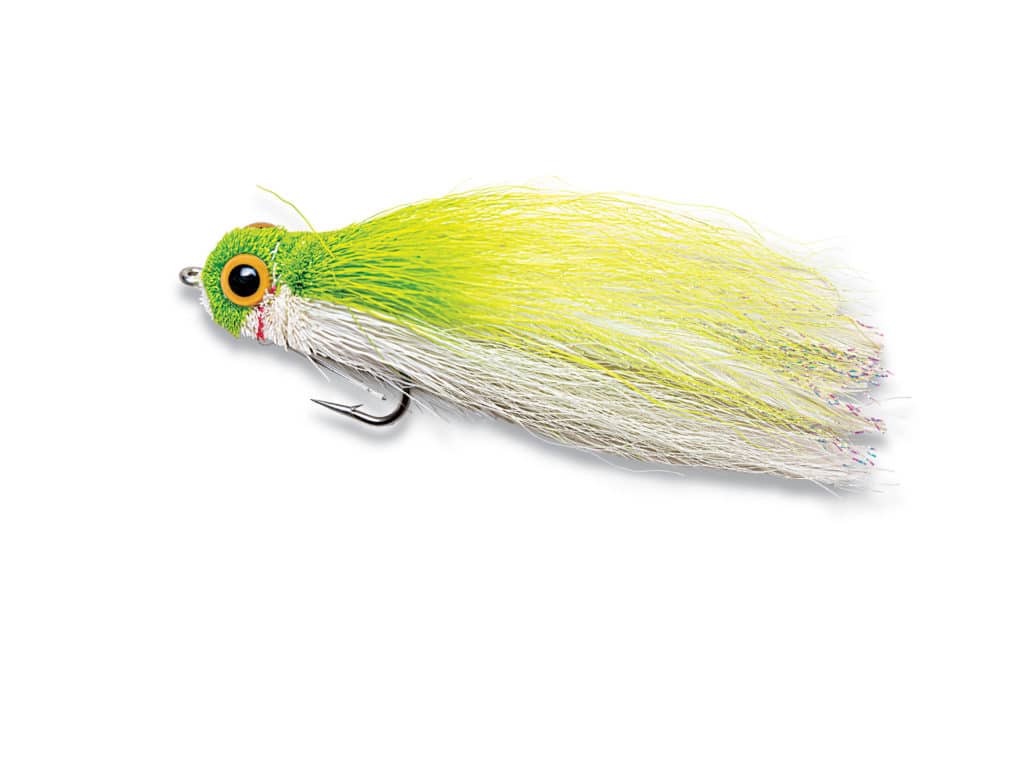
This fly floats on or just below the surface and pushes enough water to get noticed.
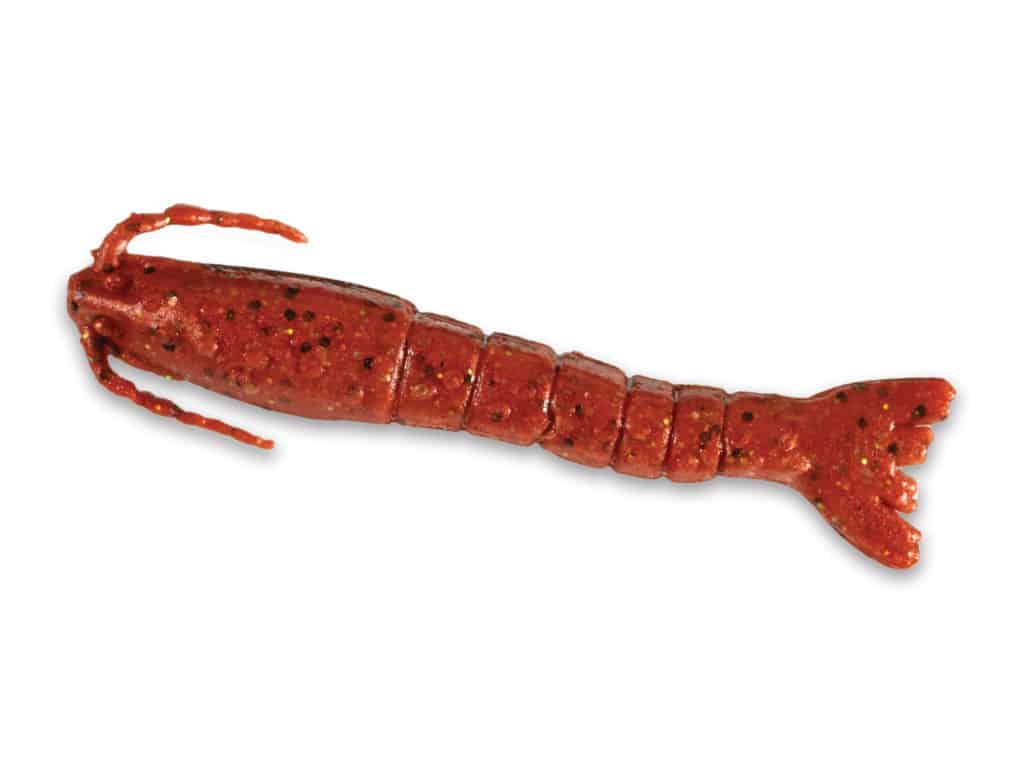
This scented soft bait has proven effective retrieved, under a popping cork, and just sitting on the bottom.
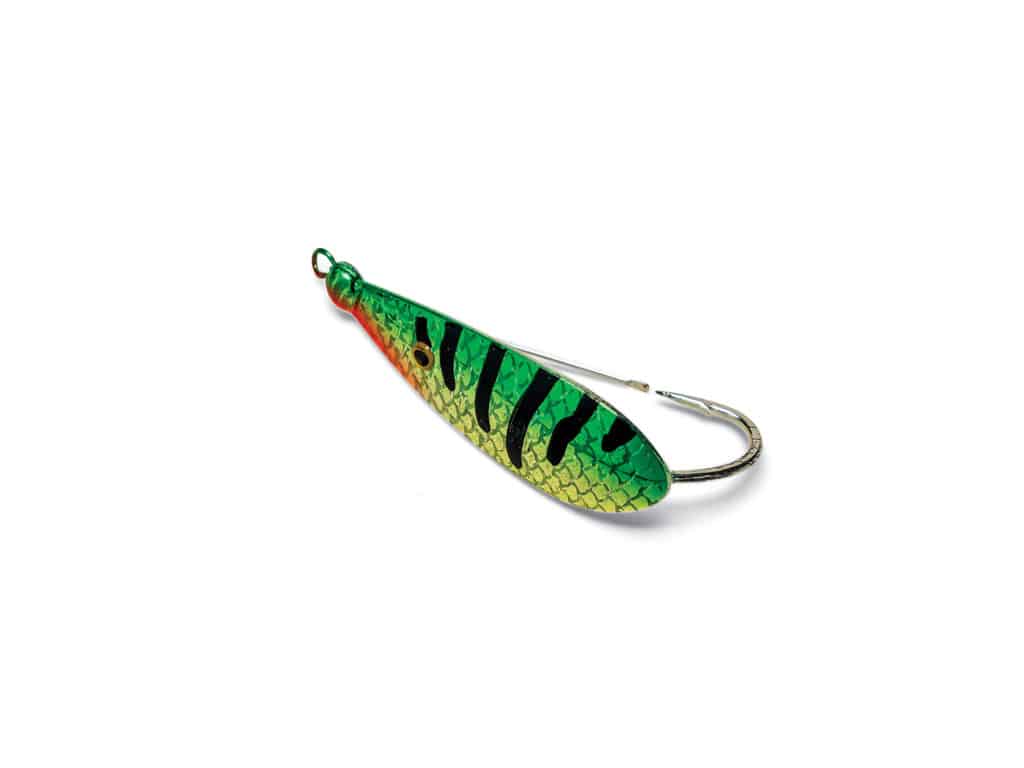
The weed guard, flash and built-in wobble make it ideal for reds on grass or oysters.
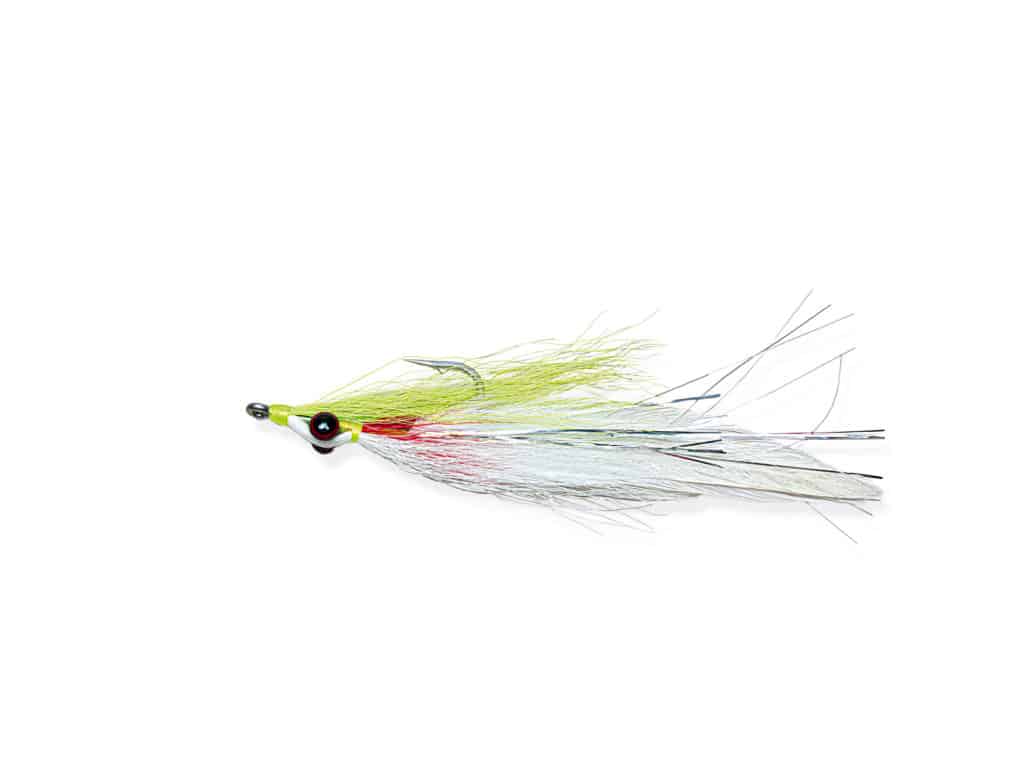
Part Clouser Minnow and part Lefty’s Deceiver, this fly has a baitfish silhouette and sinks to a redfish’s eye level.









